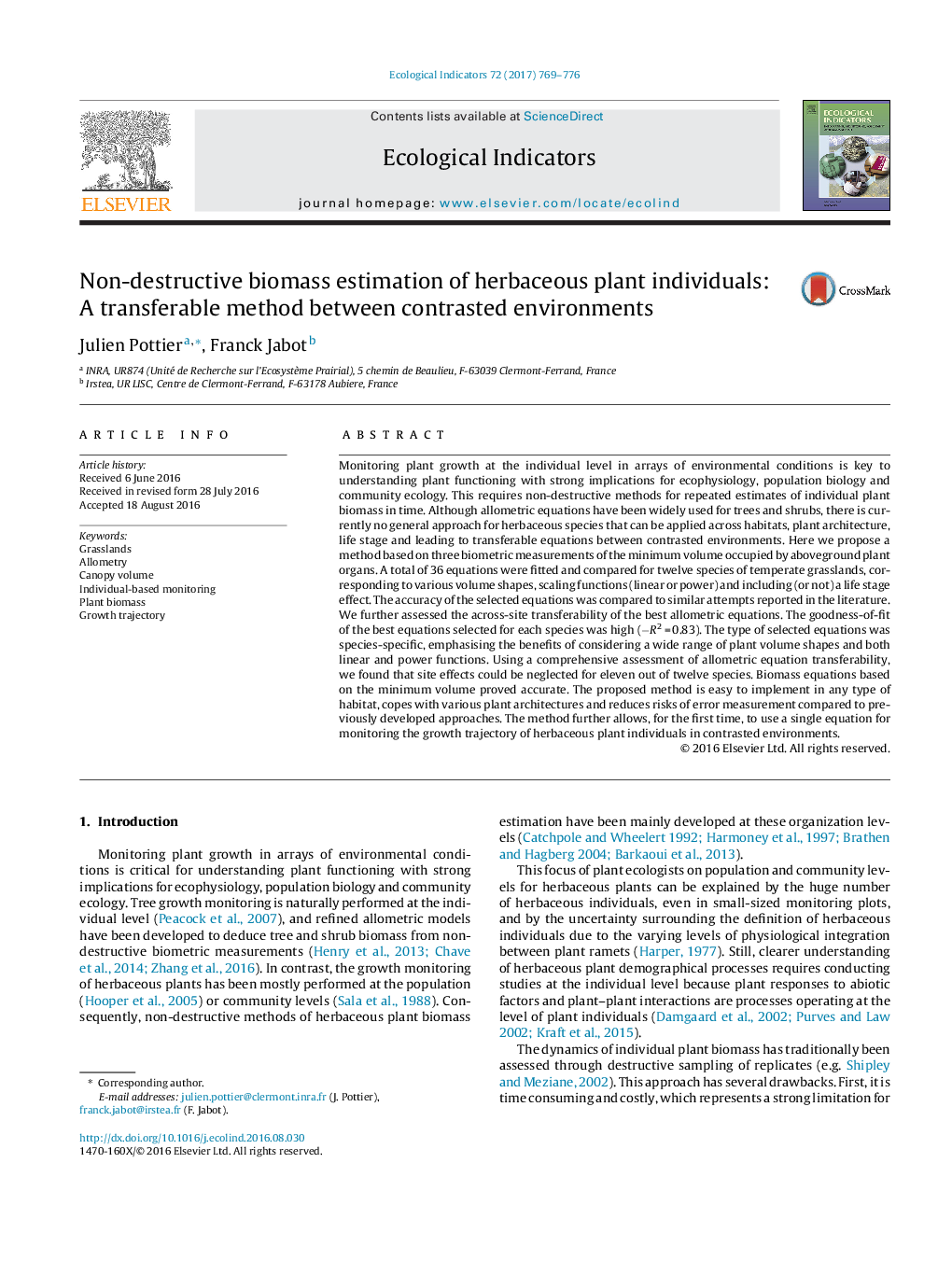| Article ID | Journal | Published Year | Pages | File Type |
|---|---|---|---|---|
| 6292867 | Ecological Indicators | 2017 | 8 Pages |
Abstract
Monitoring plant growth at the individual level in arrays of environmental conditions is key to understanding plant functioning with strong implications for ecophysiology, population biology and community ecology. This requires non-destructive methods for repeated estimates of individual plant biomass in time. Although allometric equations have been widely used for trees and shrubs, there is currently no general approach for herbaceous species that can be applied across habitats, plant architecture, life stage and leading to transferable equations between contrasted environments. Here we propose a method based on three biometric measurements of the minimum volume occupied by aboveground plant organs. A total of 36 equations were fitted and compared for twelve species of temperate grasslands, corresponding to various volume shapes, scaling functions (linear or power) and including (or not) a life stage effect. The accuracy of the selected equations was compared to similar attempts reported in the literature. We further assessed the across-site transferability of the best allometric equations. The goodness-of-fit of the best equations selected for each species was high (ÌR2Â =Â 0.83). The type of selected equations was species-specific, emphasising the benefits of considering a wide range of plant volume shapes and both linear and power functions. Using a comprehensive assessment of allometric equation transferability, we found that site effects could be neglected for eleven out of twelve species. Biomass equations based on the minimum volume proved accurate. The proposed method is easy to implement in any type of habitat, copes with various plant architectures and reduces risks of error measurement compared to previously developed approaches. The method further allows, for the first time, to use a single equation for monitoring the growth trajectory of herbaceous plant individuals in contrasted environments.
Related Topics
Life Sciences
Agricultural and Biological Sciences
Ecology, Evolution, Behavior and Systematics
Authors
Julien Pottier, Franck Jabot,
